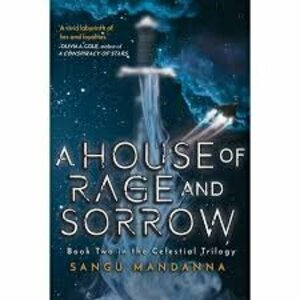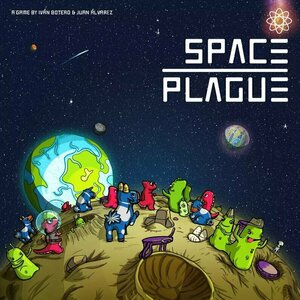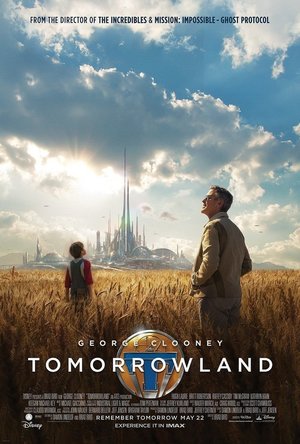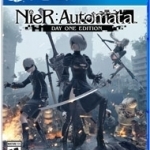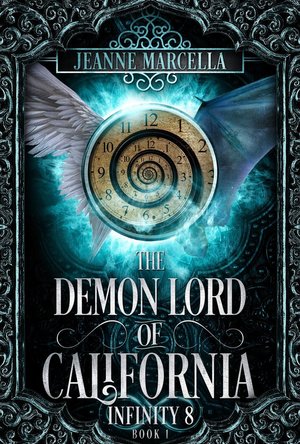
The Demon Lord of California (Infinity 8 #1)
Book
Earth, 1900. Calico Winghorse has no choice but to flee to the plane of existence called Earth....
LGBTQ+ Urban Fantasy Paranormal
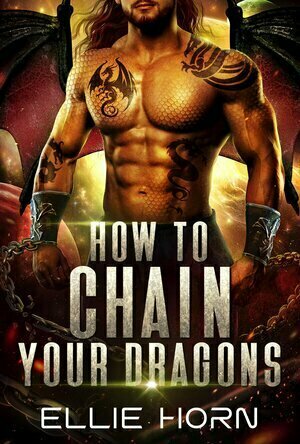
How to Chain Your Dragons
Book
MOVE OVER LITTLE GREEN MEN—THERE’S A NEW ALIEN IN TOWN. With Earth now occupied by monsters...
Reverse Harem Dragons Shifters Science Fiction Romance Post Apocalyptic
Anne (15130 KP) rated A House of Rage and Sorrow (The Celestial Trilogy, #2) in Books
Nov 4, 2019
This book was harder to read for me than the first because it was more emotional than the first, maybe a bit more dark and heavy, but it had to be for where the story's going and with where the story was in the first book. I had a major book hangover from the first book, but the book hangover isn't quite as bad this time. I'm more nervous about reading what comes next because it got pretty intense and emotional during this one.
It picks up right where it left off from the ending of the second book, flows well with the transition, but if you haven't read the first book, you might not get what's going on so I would recommend reading the previous book first before this one.
Without getting too spoilery here, the twins are even more at odds here in this book, Esmae, and Alexi, because of fighting over Kali and who gets to be the ruler and especially because of what happened with the duel and Rama. Oh man, that was a hard part of the story, that's part of why this book is so hard because of what happened with Rama. More family info, dynamics, and things develop and come to light throughout this book and the romance develops more between certain characters like Max and Esmae. There's a lot of information and feelings that are covered in this book and it deals with a lot of grief, sadness, anger with the fighting and everything that's happened, is going on and is going to happen.
I didn't like it as much as the first book because it was so heavy and dark from the emotional standpoint, but it kind of had to be that way in this part of the story. There was also a few instances of profanity/language that bothered me because I prefer to read stories without language and such when possible. Other than that, it was a well written good book that I would recommend to others especially if you loved the first one, which if you haven't read the first one, you should. Also if you want to read a Sci-Fi and Fantasy story in space that is a retelling and involves the Mahabarata and Hindu Mythology then you should read it.
Purple Phoenix Games (2266 KP) rated Space Plague in Tabletop Games
Mar 9, 2021
Space Plague is a new game from first time designers who hail from the country of Colombia. In it players assume the command of a race of aliens attempting to colonize a newfound planet before the other races assume majority. Each race is essentially the same, and have similar tactics, but may use these tactics differently from other races. The player who amasses the most plagues from their race by the time the game ends will be crowned champion, and settler of the new world.
DISCLAIMER: We were provided a prototype copy of this game for the purposes of this review. These are preview copy components, and I do not know for sure if the final components will be any different from these shown. Also, it is not my intention to detail every rule in the game, as there are just too many. You are invited to download the rulebook, back the game through the Kickstarter campaign, or through any retailers stocking it after fulfillment. -T
To setup, follow the instructions, as there are many steps for setup. Once complete, the game should look similar to the photo below. You will see in this photo the main board at the top, the circular world core board (in black and red), and individual board setups for three players. Of course, for this review I will be playing the purple faction: The Flat-Earthers (not that I agree with the actual group of Flat-Earthers). Each player receives the same components, just in their player color. This includes six action cards to serve as the opening hand.
Each round follows four phases: Planetary Deck, Play Action Cards, Planetary Event, and March. On the main board a Planetary Event Card is flipped at the start of each round. This will inform the players which terrain type will generate energy this turn, as well as give a glimpse into the future event that will occur once the card travels to the activation zone on the board. Once players have placed energy shards onto the requisite terrain tiles they must each choose one card to be played this turn from their hand. As each player has the same six beginning Action Cards turns may seem similar. These action cards include Producing Plague (placing a plague disc on the space furthest from the end of the terrain tile line, on top of the picture of the player’s spaceship), Producing a Captain (a stronger version of the normal plague disc), Fast Movement (allows plague discs to move twice toward the core or two discs to move one space each), Slow But Steady (allows one plague disc to move forward one space OR allows the player to place a shield disc on top of a plague to protect it from harm), and Evolving OR Getting Lucky (which allows the player to purchase an Evolution Card from the Market or to roll the energy die and place energy shards on the resulting terrain type). More action cards can be purchased at the Market and used on future turns in order to buff certain actions, abduct opponent plagues, or even create new types of plagues with special abilities.
Once all players have played and resolved their action card for the round the Planetary Event phase begins. If an event card has moved its way to the activation zone of the main board its event text is resolved now. These events signify death of plague discs if they reside on specific terrain types, allow for purchasing cards at the Market or else destroying the plague furthest toward the core, or other various and nefarious events.
When the event has been resolved the active player token is passed to the next player and the March phase ensues. Players will move each of their plague discs one space toward the core to make room for more incoming plagues and captains.
Once the final event card has made its way through each of the main board slots and past the activation zone the game will end. Players will count their plague discs that made it onto the core of the planet and the player with the most discs will win! The rules also include several tie-breakers, ending with a shared victory and a snarky, “tough toothpaste,” style of comment.
Components. Again, this is a prototype copy of the game, and components are not at all final. However, component quality aside, this game looks amazing on the table and hints at some really excellent plans for the final aesthetic. The character art and art on the cards is cartoony, but not in a bad way, and the other art in the graphic design is just stellar (checks around the room for the hook). The game feels “spacey” and “alieny” but also hip and lighthearted. I like it. I like it a lot. My hope for the final product is that the rulebook gets much more detailed, as I had to ask several questions to the designer that just were not clear or present in the rules. I am also hoping that the cards themselves will see quite a bit of beefiness added to them, as this prototype copy shipped with mega-thin cards that are delicate to handle. For a prototype, the components are good and show me what could be upon a successful Kickstarter campaign.
The gameplay is definitely something I want to discuss. I was blown away by how much fun I had playing this game! I cannot count how many times I vocalized how impressed I was with the design and how much fun I was having. I love the mechanic of giving all players the same components but allowing them to choose how to use them best for their strategies. Sometimes I felt that I need to flood my track with plagues and get them moving, while other times I wanted to just upgrade my race by using the evolution cards from the market. Those evolution cards are so interesting to use because they can change the course of the game, especially if specific cards come out near the beginning of the game.
Players can choose which world they wish to conquer at the start of each game (five were included with this copy), and each world possesses different strategies of play. That said, Space Plague definitely scores points for replayability from us.
While it was difficult to get into at first (remember all the rules questions I had), once I was able to truly learn the game it became so enjoyable, and everyone I have played with has thoroughly enjoyed it. If this is the style of game we can expect to come out of Colombia and Bamboo Studios in particular, I am very excited for the future and for the board game community as a whole. This one is a gem and I cannot recommend it highly enough. If you are looking for something a little kooky but with great art and super fun play, then it’s a no-brainer. Space Plague is a must-play at the very least.

3D Wallpapers & Backgrounds Pro
Entertainment and Lifestyle
App
This app is optimized for iOS 9, iPhone 6S, iPhone 6S plus & iPad Pro. NOW HIGH QUALITY, UNIQUE &...
Movie Metropolis (309 KP) rated Tomorrowland (2015) in Movies
Jun 11, 2019
Here, The Incredibles director Brad Bird is hoping to add another great film to his CV with Tomorrowland: A World Beyond, but does this George Clooney fantasy adventure tick all the right boxes?
Tomorrowland is based on Disney’s adventure ride of the same name and like The Pirates of the Caribbean franchise, requires a completely original story to ensure it translates well onto the big screen.
George Clooney, Hugh Laurie and Britt Robertson star in a film that is visually stunning but horrifically uneven with a story that doesn’t make much sense. Its vague environmental message is one of the only things to take away from it.
Clooney stars as Frank Walker, a disgruntled inventor who transports Robertson’s Casey Newton to a place in time and space known only as Tomorrowland. Once there, they must change the past in order to secure their future.
Bird’s direction is as usual, supremely confident with stunning CGI landscapes of the metropolis being beautifully juxtaposed with the Earth we know and love. There are scenes here that look like something from an art installation.
Clooney is as dynamic as ever in between all the special effects and Robertson channels Jennifer Lawrence in her role as the plucky teenager, but Tomorrowland showcases Hugh Laurie the best. His David Nix is an intriguing character who is sorely underused with the CGI being the main focus here.
Unfortunately, as countless blockbusters have proved time and time again, brilliant special effects don’t equal a brilliant film and Tomorrowland falls head first into that trap. Yes, the other dimension is on the whole, breath-taking but there’s such a lack of detail anywhere else that it feels decidedly hollow.
This isn’t to say that we have a film like Transformers: Age of Extinction on our hands but it doesn’t reach the heights of Saving Mr Banks or even the Narnia films.
Being stuck in the middle isn’t the best place to be for a movie with a rumoured production cost of $200m and it’s this lack of identity that may hold Tomorrowland back when it comes to box-office performance.
There’s also some debate over the target audience. With a 12A rating, you’d expect a similar tone to The Hunger Games or even The Amazing Spider-Man 2, but what the audience gets is a PG movie with a couple of scenes of violence, pushing it over into the coveted ‘teen market’.
Overall, Tomorrowland is a fun if entirely forgetful fantasy adventure brimming with CGI and unfortunately not much else. Hugh Laurie is an eccentric and painfully underused presence and that pretty much sums up the entire production.
Everything feels a little underdone, like there was something else under the surface waiting to break free that just didn’t come to fruition.
https://moviemetropolis.net/2015/05/24/a-cgi-disaster-tomorrowland-review/
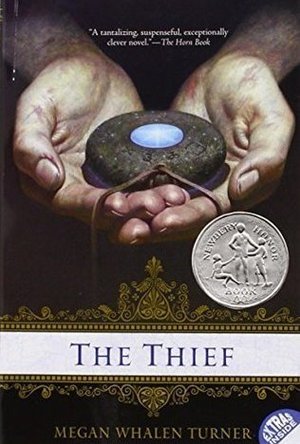
The Thief (The Queen's Thief #1)
Book
Discover the world of the Queen's Thief New York Times-bestselling author Megan Whalen Turner's...
Sarah (7800 KP) rated the PlayStation 4 version of NieR: Automata in Video Games
May 3, 2020 (Updated May 3, 2020)
This game looks amazing. The world they've created here is bleak yet beautifully rendered. The characters are well styled (even if a little inappropriate, but that's to be expected from a Japanese game). The score and music is beautiful. Maybe overly dramatic at times but it really helps build tension and drama in the game. The gameplay itself is a cross between Final Fantasy and a Devil May Cry style game, with a variety of side quests, upgrades and levelling up available alongside a non-turn based open fighting system. For me I actually preferred this style of fighting to the FF games as it's more like a real battle rather than everyone taking turns. There is a lot of detail in this game too, but without going to quite the extremes FF games do. It never quite feels as huge and unmanageable.
The story is different and how the gameplay unfolds took me a while to get used to, especially when you get on to the second and third parts of the story. But when you get over the initial irritation you soon come to love the game play and how you discover all the different aspects to the story. Especially the rather sweet & emotional sides to the characters.
However there are some downsides. The fighting is very repetitive and despite various types of bosses, there is rarely any skill involved to defeating them - continuously shooting and hack and slash seems to be the standard. There's also a lot of grinding involved in this game and it can get a bit irritating. The machines also regenerate very quickly and it can get quite tiresome to run in & out of areas within a space of minutes and have to defeat the same baddies over and over.
Also, unless you're willing to dedicate a large portion of your life then it seems near impossible to get 100% completion. I'm at 72% and have done virtually all of the side quests and endings. Admittedly I havent quite finished yet but when I do I doubt I'll have anywhere near 90% - maxing out weapons and levelling up to level 99 to defeat an otherwise undefeatable machine just doesn't appeal.
Finally, the idea behind the 26 endings to this game is one I'm still undecided on. In a way it feels like a "choose your own ending" style thing like the old Goosebumps books, however it's not obvious how to get these endings (I looked them up). Maybe it's because I'm not a fan of wandering everywhere in an open world trying & hitting absolutely everything, it's a bit of a slog. But knowing where to find the endings for me made them a little more entertaining.
Overall this is a very enjoyable game and definitely an 8/8.5. If they had cut out some of the grinding and slogging commonly found in rpgs to make it more achievable to get 100%, I'd definitely rate it at least a 9.

Beautiful Wallpaper.s – Top Cute Image.s & Theme.s
Lifestyle and Entertainment
App
► Beautiful wallpapers * High quality wallpapers and backgrounds for phones and tablets! * This...
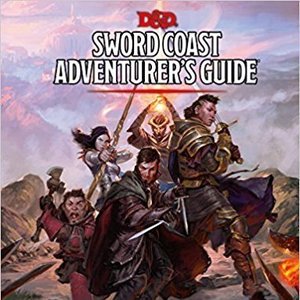
Sword Coast Adventurer's Guide (Dungeons and Dragons 5th Edition)
Tabletop Game
Get everything you need to adventure in the Forgotten Realms on the exciting Sword Coast, home to...
